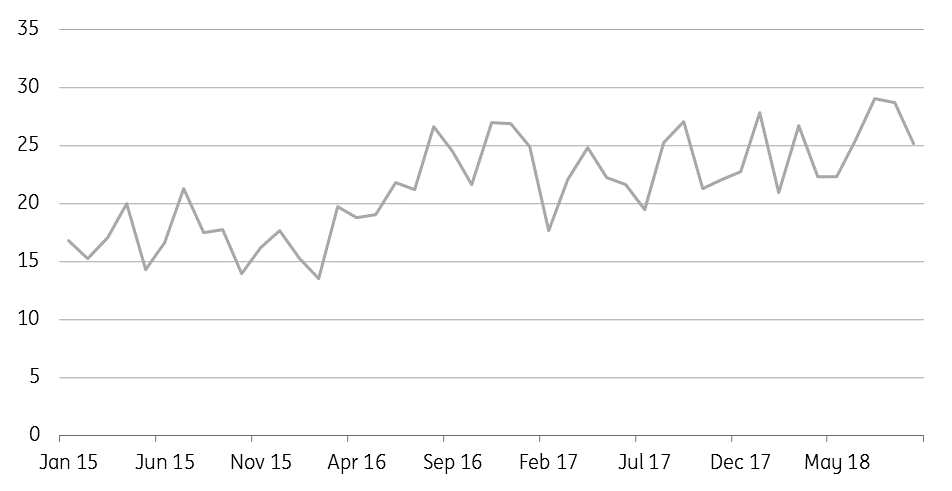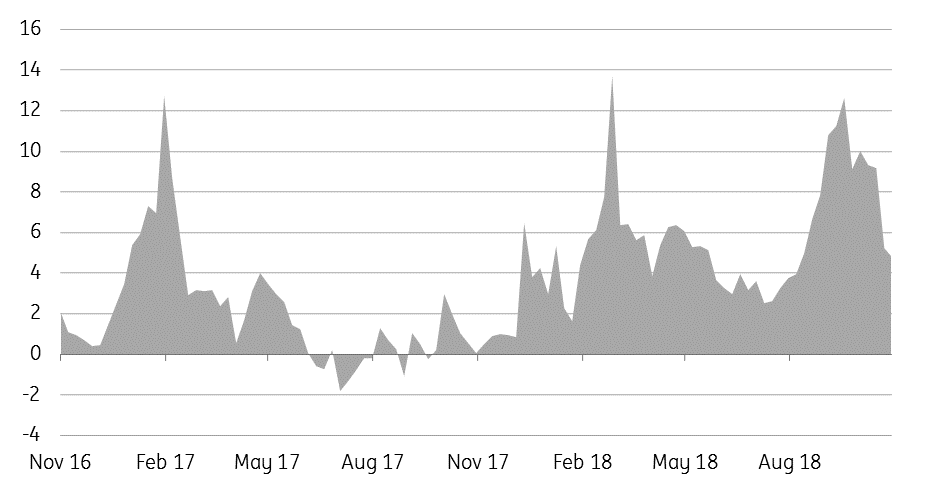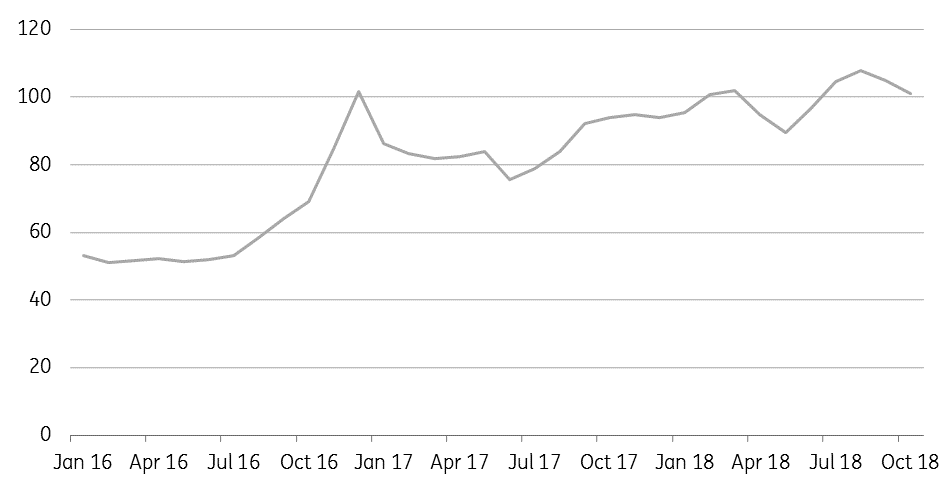Coal: The market awaits China
Thermal coal prices have surprised the market once again this year, with stronger imports from China proving supportive for the seaborne market. Chinese policy will be key for how prices evolve over the winter
What will China do next?
China remains key to the seaborne coal market, and government policy is clearly going to dictate price direction as we move deeper into winter.
Chinese coal imports over the first 9 months of this year totalled 228mt, up 11% YoY, and these stronger imports have offered support to the market for much of the year. This has particularly been the case for higher calorific coal, with the spread between Newcastle 6,000 kcal/kg and 5,500kcal/kg coal widening to US$44/t, from around US$25/t at the start of the year.
However, port restrictions have meant that the seaborne market has edged lower recently from levels seen earlier in the year. The Chinese government has been keen to keep domestic coal prices within a range of CNY500-570/t. However, they have failed to do this for much of the year- at the moment prices are trading around CNY648/t. The government will take comfort in the fact that domestic prices have trended lower since early October, but this could change as we enter peak demand. This does leave many questioning whether the Chinese government would take any action to bring prices lower. If the government wants a weaker domestic market, one solution would be to relax import restrictions, which would obviously be constructive for the seaborne market. For now, the government says it will not relax current restrictions.
Looking at domestic supply, it has struggled to grow by any significant amount this year. Domestic output over the first 9 months of the year totalled 2.59b tonnes, just 2.91m tonnes more than the same period in the previous year. China’s National Energy Administration is targeting coal production of 3.7b tonnes over 2018, up 4% YoY. But based on current production trends, the country will fall short of this target. Meanwhile, according to SteelHome, thermal coal port inventories in China have declined in recent weeks, falling from 22.85m tonnes towards the end of September to 18.61m tonnes as of the end of October. In fact, port stocks have fallen to their lowest level since early June.
How tight the coal market will be over the winter will largely depend on seasonal demand but for now, China’ s National Climate Center is forecasting a warmer winter over most parts of the country. Furthermore, the National Development and Reform Commission (NDRC) believes that while the domestic LNG balance will be tight this winter, there should be adequate supply for residential use. However, if we do see a repeat of last year, where LNG supplies were not sufficient, expect increased volatility in seaborne coal prices.
Chinese coal imports (m tonnes)

The European carbon effect... well not just yet
In Europe, coal prices have been supported by a buoyant energy complex. Initial strength would have come from the Asian market, but stronger cooling demand over the European summer has been supportive for API2, which has seen the Newcastle/API2 spread narrowing from US$23/t in early August to a little over US$6/t currently.
European natural gas prices also rallied strongly over the summer, on the back of strong demand and restocking, offering further support to the coal market. Natural gas injections over the summer totalled 735TWh, compared to a 5 year average of 564TWh, helping to push stocks back above the 5-year average.
Looking ahead, coal prices may find some short-term strength, with inland buyers starting to restock, with water levels on the Rhine starting to rise once again. Low water levels over the summer restricted barge movements along the river.
A factor that may be an obstacle for stronger European coal prices in the longer term, is the general strength that we have seen in European carbon prices. Carbon prices traded to a high of €25.2/t in early September, from just over €8/t at the start of the year. Although more recently prices have fallen back below €16/t. This general strength has certainly pushed up power generation costs. But for now Dutch clean dark spreads are still relatively more attractive than clean spark spreads, further strength in carbon prices will need to be seen in order to drive a change. Assuming constant feedstock prices, carbon prices will need to trade up towards €30/t to make gas power generation relatively more attractive than coal power generation.
Dutch clean dark-spark spread narrows (EUR/MWh)

Indonesia keen to shift supply
The Indonesian Rupiah has struggled this year, much like other emerging market currencies, depreciating by almost 15% since late January. As a result, the government is keen to rein in a growing current account deficit. While part of this is through increasing import duties on a number of goods, the government is also keen to increase exports, and coal is one obvious avenue that the government will focus on. Indonesian coal prices are at relatively attractive levels for buyers, with the Indonesian reference price currently at just under US$101/t, compared to the Newcastle benchmark, which is trading at around US$108/t. The discount for Indonesian coal has been as wide as US$20/t at stages through the year, which should prove supportive for demand.
Indonesia sets production targets every year, and recently the government increased their target from 485mt to 507mt. However given that production over the first three quarters of the year totalled 319mt, and there are reports of miners struggling to get hold of equipment, it may be quite a challenge for miners to reach this production target for 2018.
Indonesian coal reference price HBA marker (US$/t)

This publication has been prepared by ING solely for information purposes irrespective of a particular user's means, financial situation or investment objectives. The information does not constitute investment recommendation, and nor is it investment, legal or tax advice or an offer or solicitation to purchase or sell any financial instrument. Read more
Download
Download article
1 November 2018
In case you missed it: Change of guard This bundle contains 9 Articles